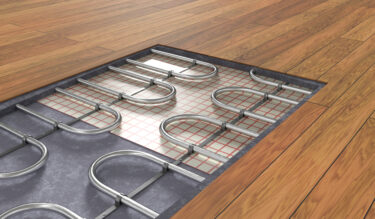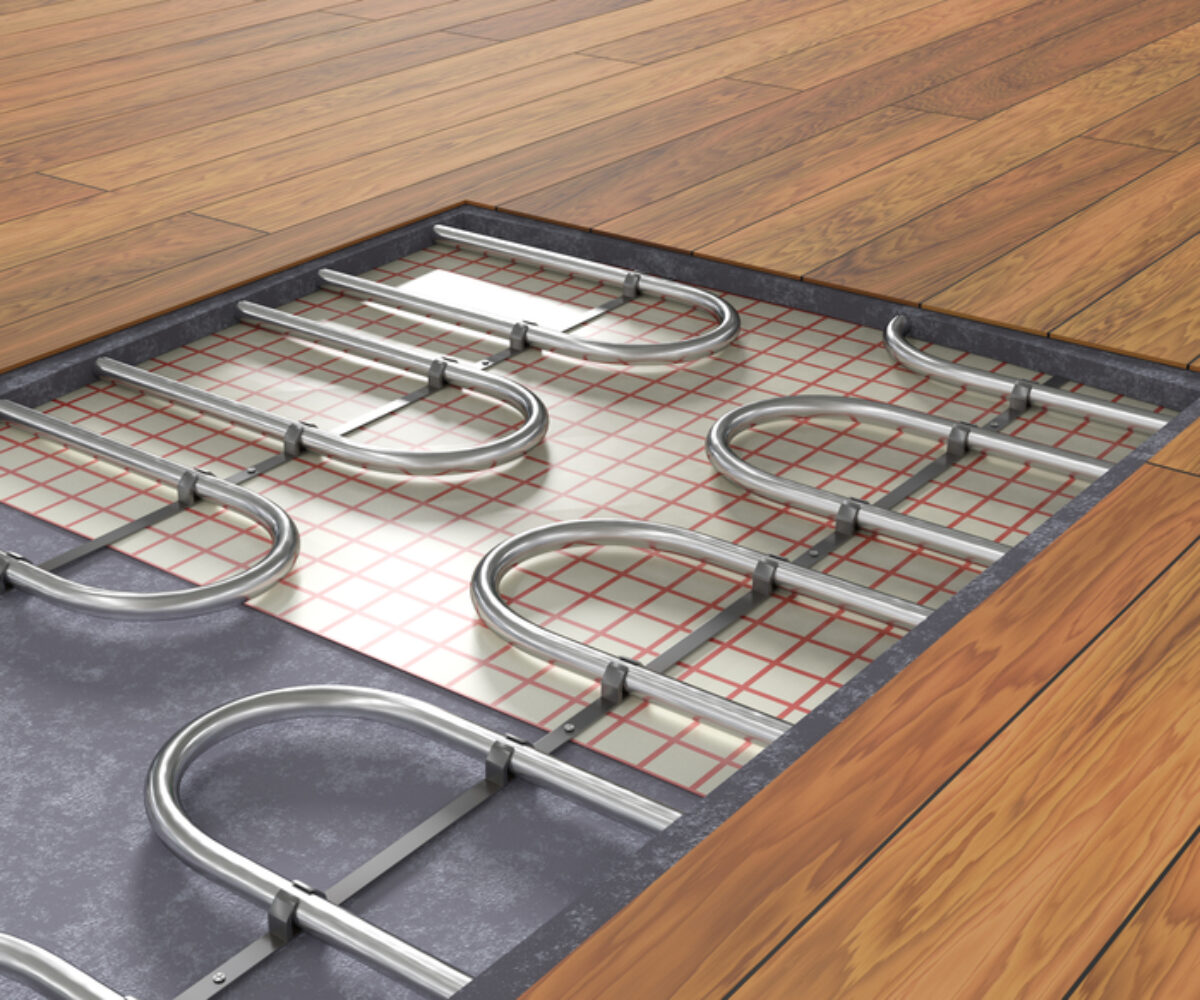Pros and Cons of Radiant Floor Heating in Basements
 Are you researching the cost and benefits of radiant floor heating in your basement? While most people don’t want to pay the cost to install in-floor heating throughout an existing basement, you might want to consider radiant heating for tiled areas and bathrooms.
Are you researching the cost and benefits of radiant floor heating in your basement? While most people don’t want to pay the cost to install in-floor heating throughout an existing basement, you might want to consider radiant heating for tiled areas and bathrooms.
We’re here to help you weigh the pros and cons, but first, you need to know how the process works.
How does radiant floor heating work?
Radiant floor heating is exactly what it sounds like. A heating system is installed underneath the floor, which warms people and objects through direct contact rather than with air circulation. There are two types of radiant floor heating:
Hydric
Water-based floor heating is composed of hot water pipes that run underneath the floor.
Electric
In electric systems, the floor is warmed by safely-installed cables.
What are the pros and cons of radiant floor heating?
If you’re planning tile flooring in your basement, see if these benefits sound appealing:
1. Even Heat Distribution
Both types of radiant floor heating, hydric and electric, are equally effective and heat the floor evenly. While standard heaters warm the air through uneven vents, heated floors warm the entire room at once.
2. Less Maintenance
Hydric floor heaters present the possibility of maintenance since water pipes are involved. However, electric floor heating is entirely hands-off for the owner. If there is an issue in the future, a professional can use a thermal camera to locate and fix the problem.
3. No Noise
No furnace means no loud noises coming from the heat source. Radiant floor heating is silent and peaceful.
4. Energy Efficient
In-floor heating conserves energy, which results in long-term utility-bill savings.
5. No need to worry about poor indoor air quality.
Heaters and ductwork can become a conduit for dust, mold, and other allergens to cycle through the air. These pollutants, once ingested, can cause serious health problems. Radiant floor heating removes this problem, as there are no vents to keep clean.
6. Perfect for Bathrooms
One of the most popular uses for radiant floor heating is tile heating in bathrooms. Tile is cold and unwelcoming, especially early in the morning. Many homeowners heat their bathroom floors to make waking up and showering a more pleasant experience. This is particularly beneficial in a basement apartment where the bathroom is in regular use.
Despite the benefits, there are some drawbacks to installing heated floors.
1. The existing floor would need to be replaced.
Since floor heating naturally goes under the floor, it can be a big project for already-existing basements. Floors would have to ripped out and replaced once professionals finish installing the system. It is a decision best made before a basement is finished or built.
2. It’s an expensive project.
While floor heating will save you money on your utility bill, the initial installation cost can be high.
3. It elevates the height of floor.
Floor heating can increase your floor height by ½-1″. This could be a big deal in basements that already have low ceilings.
Radiant floor heating isn’t right for everyone, but it can add comfort to cold areas of your basement, like a bathroom. If you have further questions regarding in-floor heating, do not hesitate to call us today.

